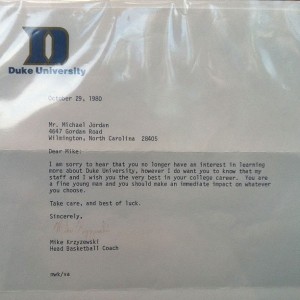I love pro sports – football, basketball, baseball – it doesn’t matter, I love watching the best athletes in the world compete against each other. I also love watching college sports – but for a different reason. Pro sports and college sports are different. One is a business of entertainment and one is competition. While their is an element of competition in pro sports – the bottom line business proposition is still to entertain. 99% of college sport athletes will never go on to become pro sport athletes and get paid for playing the game they love. They play for a number of reasons, the biggest one is that they love playing the game and they love the competition. Some pro sports athletes also do this – but if they weren’t being paid, most would not be putting their bodies through the punishment they do. Still, there talent is awesome and it’s why we pay big bucks to see them ‘perform’.
That is why I love the Tom Brady story. An all-pro NFL quarterback who takes less money then he could get on the open market, so his ‘team’ can go out and get better talent for him to play with and possibly compete for future Super Bowls. Great pro athlete story. Here’s the breakdown from the NY Times:
“Brady took a deal that will pay him well below the market rate for a quarterback of his caliber at a time when the Patriots and every other team are struggling to manage against a salary cap that is expected to remain nearly flat for several years.
Brady is now under contract through the 2017 season, when he will be 40. But the contract will pay him just $27 million, far below the annual $20 million that is the current average for the game’s top quarterbacks. The terms of the contract were first reported by Sports Illustrated.
Brady also took a below-market deal in 2005, with the thought that he wanted to give the Patriots the chance to sign and keep other players. That is what drove his decision-making this time, too.”
I love when guys from the teams I root for do this because of all the reasons Brady is doing this. When anyone turns down millions of dollars to make your organization better – that means something! But, this doesn’t make it right for everyone!
Let’s face some facts. Brady has more money then he’ll ever need, a super-rich wife and incredible earning power after sports in the broadcast booth. He can take the pay cut and not flinch. The problem with these kinds of stories is that companies believe you should be willing to do the same thing. “Hey Tim, we need you to take a $10K cut to help us out through this rough patch we’re facing.” Um, No! I’m not Tom Brady – and I’m guessing you aren’t either – pay cuts in ‘real’ life, don’t work. Yet, we see organizations, even our own government, trying to do this. It’s a disaster. Don’t get me wrong – I understand why organizations do this. If the alternative is to go out of business – I’m going to offer up some pay cuts. The reality, though, is this a downward spiral of doom – 99.9% of organizations that force pay cuts don’t make it.
They don’t make it because the good people, the real talent, bail as fast as possible. Leaving you less talented, under paid, desperate employees – that is not a recipe for success. So, what can you do? Do more with less. Don’t cut everyone – just eliminate the lowest performers and keep the pay at where it should be. People are willing to pick up more if they feel like it truly is going to make a difference. Cutting pay, across the board, only demotivates the entire staff, further compounding your problem of survival. As an HR Pro don’t allow yourself to be pulled into this leadership trap – it won’t work.


